Trees in our wood
The woodland is mostly comprised of 20 year old Beech, Oak, various Conifers and Sycamore with some later planting of Ash, Wych Elm and Hazel. The Shrub layer is developing with Elder, Holly, Hazel and Hawthorn. Yew has also been introduced as a native British tree. There is some Willow but this has struggled to survive the very dry conditions in the wood, which is planted on a gravel bed.
Sycamore Acer pseudoplatanus
The Sycamore is probably the most common 'proper' tree in the wood. It does have the advantage that it is fast-growing, which can help it get to a good size before other trees become established, but it is not a particularly good host plant for wildlife apart from providing general cover and some nesting sites for birds.
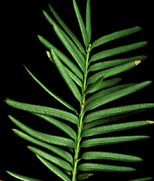

Yew Taxus baccata
The tree has a reputation for living longer than almost any other species which will grow in the United Kingdom; many are well over 1,000 years old. Individual trees will grow up to about 20m (88 ft) tall. Yew is a resilient tree which will tolerate a lot of shade and withstand smoke and salty winds. Yew wood is amongst the densest of all conifers and is elastic so was once used for making long bows, spears and dagger handles.
Oak Quercus robur
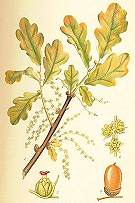
The Oak is of course well-known as a tree with a very long lifespan and will grow to a good size, but as our wood is very young the few Oak trees here are not very large. As well as its distinctive lobed leaves, the Oak also produces one of the most well-known tree 'seeds', the acorn. Acorns are in theory edible, but they are very bitter so I wouldn't recommend trying it!
Beech Fagus sylvatica
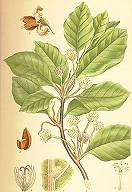
The Beech is a nice-looking deciduous tree with glossy, slightly toothed leaves and a smooth greyish bark. It can provide food for animals with its nuts known as 'Beech mast'. We have a fair number of Beech trees in the wood which have already grown to a diameter of 20-30cm. Beech wood is good for firewood, as it burns for a long time with a steady flame, but we don't have enough Beech trees here to provide us with much in the way of fallen branches for the fire.
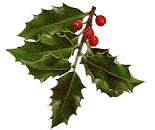
Holly Ilex aquifolia
Although Holly can be quite vigorous once it gets going, there are few Holly trees (or bushes) in our wood as they have yet to become properly established.

Ash Fraxinus excelsior
The Ash tree is fairly abundant in Britain, being about the fourth commonest species behind trees like Oak, and can grow quite quickly. It is also a good species for 'coppicing', a method of woodland management that involves cutting the tree right back at intervals of around 20-30 years which then encourages it to produce multiple straight poles that are useful for woodland construction projects.
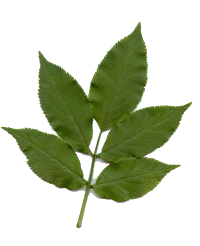
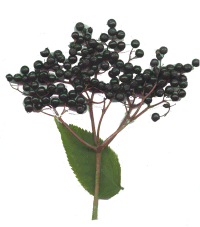
Elder Sambucus nigra
Elder grows quickly, forming small thickets where stems have been cut back. It produces large sprays of small creamy-white flowers, which we sometimes collect to make 'Elderflower cordial'.